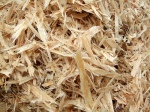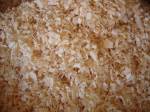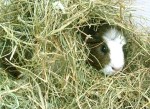Blog Archives
Cedar and Pine Bedding for Rodent Pets
This post is dedicated to educating rodent owners on the subject of proper bedding and nesting materials, and the science behind why you should never use cedar and pine products. Whether you are the owner of a rat, hamster, guinea pig, gerbil, or any other pet from the rodent family, you should be informed that cedar and pine shavings are toxic to pets.
Looking at the chemical make-up of these two types of woods, it is clear to see that these soft wood materials give off “hydrocarbon (or phenols)” – which is a toxic acid based chemical compound. These phenols give the wood shavings their scent and upon inhalation the rodent respiratory system is at danger. Major companies such as “pine-sol” use the phenols found in cedar and pine oil in household cleaning products, and flea and tick preventative companies use these phenols and oils in their products as a repellant. The rodent respiratory system is much smaller and more easily compromised, and cannot handle these toxic chemicals. As with rodents, human systems cannot handle too much of this chemical compound. Recent studies with humans that work in the wood production industry show a common trend for respiratory diseases after prolonged exposed to cedar and pine woods.
- Cedar Shavings
- Pine Wood Shavings
Now let’s look at some of the better options for use in your rodent’s home. I highly suggest steering away from any wood product entirely, as some companies mask the use of pine and cedar in a pressed wood-chip form. With so many other useful products on the market, you should have no problem avoiding wood-chip products. Though wood based products tend to be cheaper, animal health should always be a higher priority than cost.
Your Four Best Options
There are four very different options available, that I feel are best to use with rodents: recycled paper, cotton, straw, and corn cob based products. As I am someone who believes strongly for the care of our environment and recycling, I feel that recycled paper bedding is the best option. Using recycled paper bedding does mean that you will need to change out the bedding more frequently, as it generally has no scent deodorizing properties. On the flip-side, the lack of deodorizers is also the reason why I would choose this material over any other – as you are guaranteed there are no negative impacts on the respiratory system of your rodent. Cotton based bedding is generally used for nesting material with pregnant rodents, and can be a bit more pricy than other rodent-friendly products – but is a great insulation material for cold winter months. Straw bedding is great for rabbits and other larger rodents such as guinea pigs. It is generally middle-of-the-shelf priced, and has natural scents that help mask high concentrated and acidic “ammonia” odors of urine. Corn cob bedding has magical absorption properties that help lock in moisture, though a bit pricey – it also has wonderful ammonia deodorizing properties.
- Recycled Paper
- Cotton
- Straw
- Corn Cob Granules








